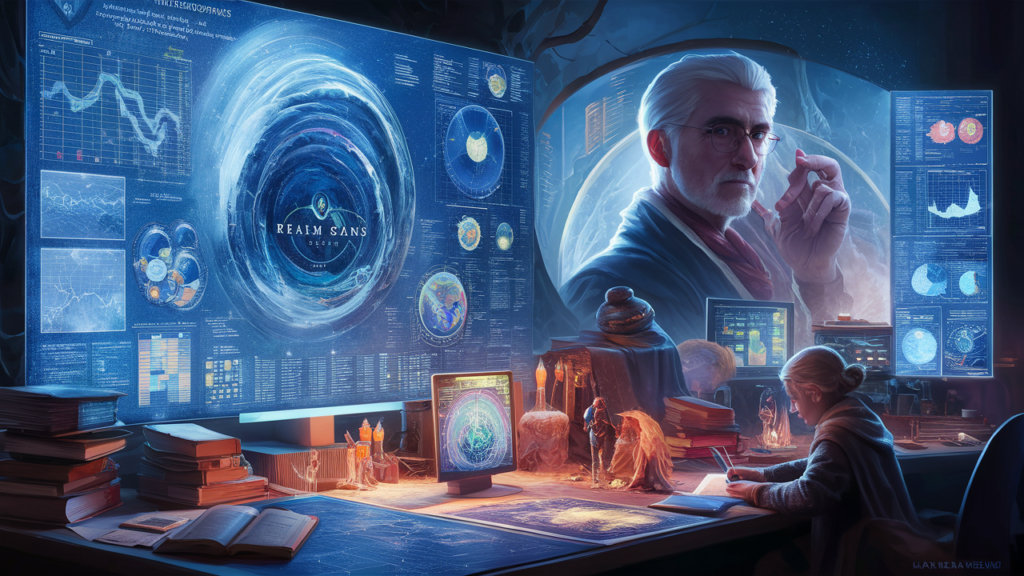Are you wondering what happened to realm scans and why they seem to have disappeared from the limelight? Realm scans, once a popular tool used in various sectors, have seemingly faded into obscurity in recent years. Let’s delve into the reasons behind this phenomenon and explore the potential future of realm scans.
The Rise of Realm Scans
Realm scans gained prominence in the early 2000s as a powerful tool for mapping out real-world spaces in digital form. Companies across different industries utilized realm scans for a range of purposes, from creating virtual tours of properties to aiding in urban planning and disaster management. The technology behind realm scans, such as LiDAR (Light Detection and Ranging), played a crucial role in capturing detailed 3D models of environments.
The Fall from Prominence
Despite their initial popularity, realm scans began to face challenges that led to their decline in usage. One significant factor was the high cost associated with conducting realm scans, making it a prohibitive option for many organizations. Additionally, advancements in other technologies, such as photogrammetry and drone mapping, provided cost-effective alternatives to achieve similar outcomes.
Shift in Industry Preferences
The shift in industry preferences towards more accessible and user-friendly solutions contributed to the diminishing demand for realm scans. Companies started looking for faster and simpler ways to capture spatial data without compromising on quality. This led to the advent of mobile mapping solutions that offered convenience and efficiency in data collection and analysis.
Rise of Mobile Mapping Solutions
Mobile mapping solutions, leveraging smartphones and lightweight devices, gained traction for their ease of use and affordability. These solutions enabled users to collect data on the go, eliminating the need for specialized equipment and extensive training. The widespread adoption of mobile mapping applications revolutionized the way spatial information was captured and utilized in various fields.
Integration with AR and VR Technologies
Another significant development that impacted the realm scans landscape was the integration of spatial data with augmented reality (AR) and virtual reality (VR) technologies. This fusion allowed for immersive visualization of 3D models created from scanned data, enhancing the user experience and facilitating better decision-making processes. The convergence of mobile mapping, AR, and VR presented a compelling alternative to traditional realm scans.
Future Prospects and Innovations
While realm scans may have taken a backseat in recent years, technological advancements continue to drive innovation in the spatial data capture domain. New tools and techniques are being introduced to streamline the process of creating accurate 3D models of real-world environments. One notable development is the use of AI and machine learning algorithms to automate the scanning and modeling processes, reducing time and costs significantly.
AI-Driven Spatial Data Capture
AI-driven spatial data capture solutions are poised to revolutionize the realm scans industry by automating labor-intensive tasks and enhancing accuracy. Machine learning algorithms can analyze scanned data more efficiently, identify patterns, and generate detailed reconstructions of physical spaces. This advancement holds great potential for a wide range of applications, from architecture and construction to gaming and virtual simulations.
Cloud-Based Data Processing
The shift towards cloud-based data processing has also contributed to the evolution of spatial data capture methodologies. By leveraging cloud infrastructure, organizations can store and analyze vast amounts of scanned data remotely, reducing the burden on local resources and increasing scalability. Cloud computing has enabled real-time collaboration and data sharing, transforming the way spatial information is managed and utilized.
Conclusion
The decline of realm scans can be attributed to various factors, including cost constraints, changing industry preferences, and the emergence of alternative technologies. However, the realm of spatial data capture continues to evolve with new innovations and solutions that promise to redefine the landscape. As AI, cloud computing, and AR/VR technologies converge, the future of spatial data capture looks promising, offering exciting possibilities for diverse sectors and applications. Keep an eye on the horizon for the next wave of advancements in this dynamic field!









